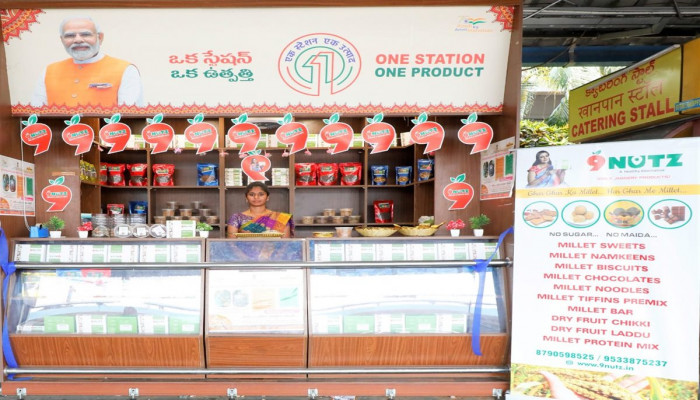Indian Railway launches ‘One Station One Product’ scheme to promote indigenous products
- In Reports
- 10:43 AM, May 16, 2023
- Myind Staff
The Ministry of Railways has launched the ‘One Station One Product’ (OSOP) scheme in Indian Railways with the objective of promoting the ‘Vocal for Local’ vision of the government, providing a market for local/indigenous products and creating additional income opportunities for the marginalized sections of society.
Since its pilot launch on March 25, 2022, 728 stations have been covered by 785 OSOP outlets spread across 21 States and 3 Union Territories. The National Institute of Design created the OSOP stalls to be uniform. There were 25,109 direct beneficiaries overall between March 2022 and May 2023.
The product categories covered under this scheme include handicrafts/artifacts, textiles and handlooms, traditional garments, and local agricultural produce (including millet)/processed/semi-processed foods.
The OSOP outlets offer products specific to the area and include artifacts made by indigenous tribes, handlooms by local weavers, handicrafts like world-famous wood carving, chikankari, and zari-zardozi work on clothes, spices, tea, coffee, and other processed/semi-processed food items/products indigenously grown in the area. Under the scheme, the allotment is done to all eligible applicants on a rotational basis.
In north-east India, for example, varieties of Assamese Pitha, traditional Rajbongshi Dress, Jhapi, local textiles, and jute products are available on OSOP stalls. In Jammu & Kashmir, Kashmiri Girda, Kashmiri Kahwa, and dry fruits are famous.
In southern India, cashew products, spices, and Chinnalapatti handloom sarees are catching the attention of passengers. In the western part of the country, embroidery and zari zardozi, coconut halva, locally grown fruits, processed foods, and bandhani are famous. The cumulative direct beneficiaries from March 2022 till 1 May 2023 are 25, 109, which is expected to grow with the increasing popularity of the scheme.
Image source: Financial Times







Comments